
Embarking on a temple darshan tour from Raxaul to Kathmandu is more than just a journey—it’s a soulful blend of devotion, culture, and discovery. Tucked away in the lap of the Himalayas, Kathmandu is a spiritual haven, famed for its centuries-old temples and sacred traditions. Each shrine tells a story of faith and heritage, offering both divine blessings and a glimpse into Nepal’s rich cultural past. This pilgrimage is not only about seeking darshan at holy temples but also about experiencing the unique harmony of Hinduism and Buddhism that thrives in the city. Raxaul, located in the East Champaran district of Bihar, is one of the busiest gateways to Nepal. From here, thousands of pilgrims cross the border at Birgunj every year to seek blessings in Nepal’s holiest shrines, especially in Kathmandu – the city of temples. This journey is not just about travel, but about connecting with divine energy, exploring Nepal’s rich culture, and experiencing peace of mind. In this detailed guide, we’ll cover everything about the Best Raxaul to Kathmandu Temple Darshan Tour, including the must-visit temples, travel options, itinerary, facilities, and tips for devotees.

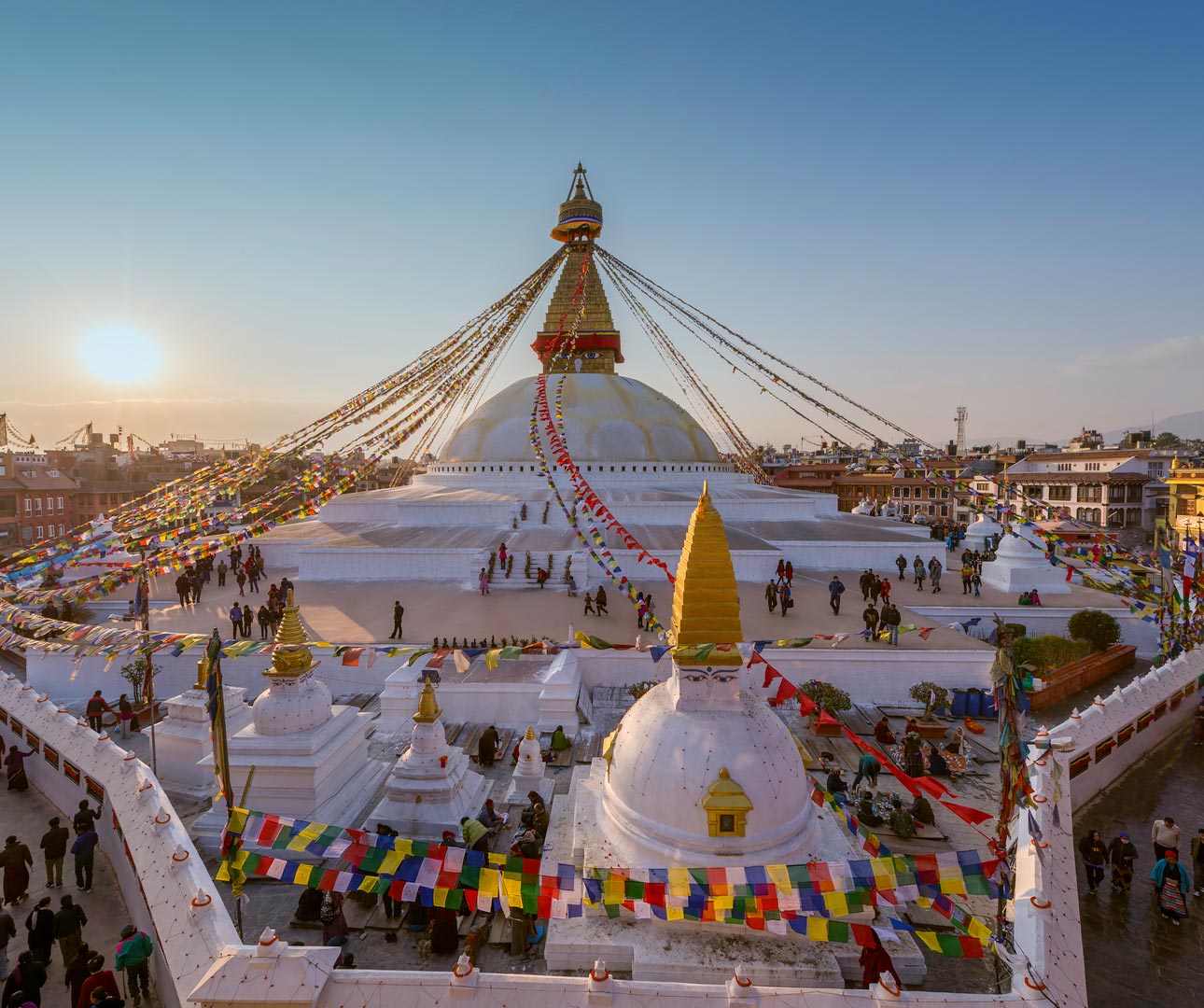
Kathmandu isn’t just a city—it’s an open-air museum brimming with history, spirituality, and vibrant traditions. Once a bustling stop on ancient trade routes, it has transformed into a cultural and spiritual haven for both pilgrims and explorers. The Kathmandu Valley proudly houses seven UNESCO World Heritage Sites, each showcasing breathtaking temples, stupas, and architectural masterpieces. From finely carved wooden windows to timeless legends whispered through narrow alleys, this city is where the past and present blend seamlessly against the stunning backdrop of the Himalayas.
Here, every corner tells a story. One moment you might be gazing at a centuries-old stupa in quiet reflection, and the next you could find yourself swept up in the energy of a colourful local festival. Whether you’re drawn by devotion, curiosity, or the sheer charm of discovery, Kathmandu is ready to take you on a journey through time and tradition.

Kathmandu could easily be called a pilgrim’s paradise—a sacred landscape where temples are more than just places of worship; they’re living centres of devotion. Take Pashupatinath Temple, for example—one of the holiest shrines dedicated to Lord Shiva. Its air hums with mantras, the ringing of bells, and the glow of oil lamps. For centuries, these temples have been the city’s spiritual heartbeat, drawing seekers of blessings, peace, and divine connection from all over the world. Every shrine carries a story, deeply rooted in mythology, history, and the eternal human quest for faith.
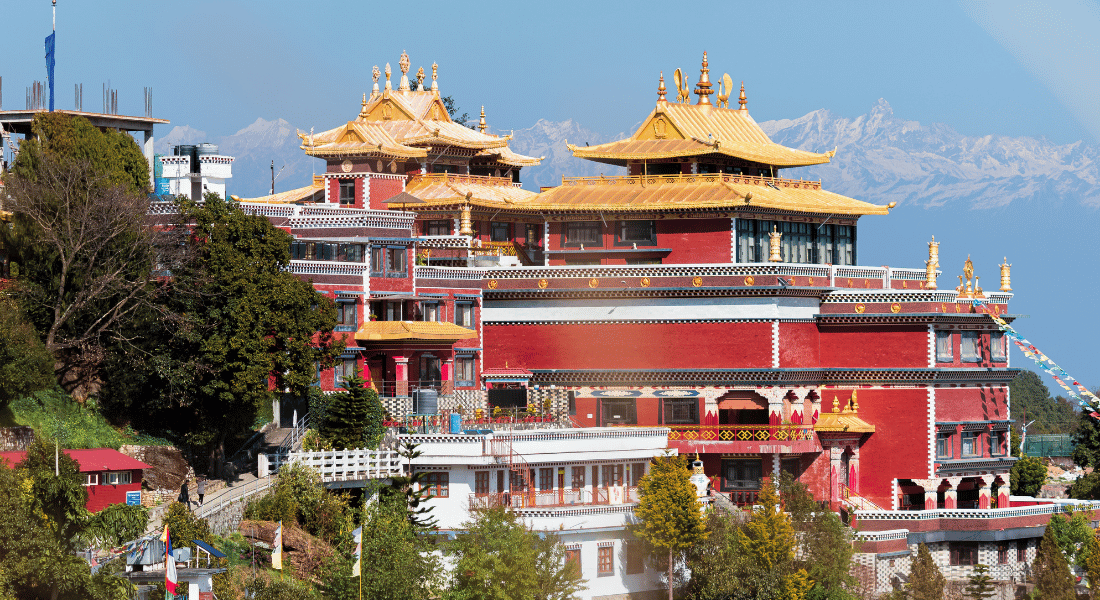
Kathmandu, the capital of Nepal, is a city that blends spirituality with heritage. Often called the “City of Temples,” it houses centuries-old shrines, monasteries, and UNESCO World Heritage Sites. For devotees, it is a sacred destination because:
It is home to Pashupatinath Temple, one of the 12 Jyotirlingas of Lord Shiva.
It has important Buddhist sites like Boudhanath Stupa and Swayambhunath Stupa.
The city preserves ancient Hindu and Buddhist traditions, offering a unique cultural mix.
Darshan tours are affordable and accessible from the Indian border.
Thus, for Indian pilgrims looking for a short yet fulfilling religious trip, Kathmandu temple darshan from Raxaul is an ideal option.
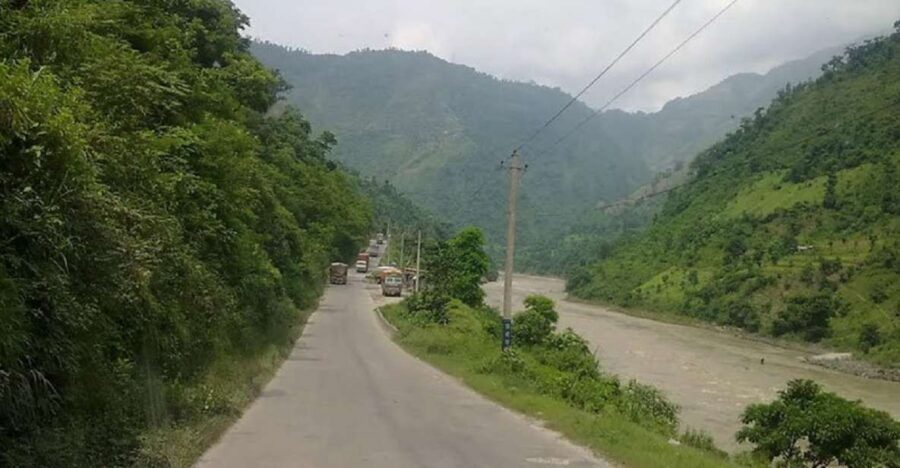
The distance between Raxaul and Kathmandu is about 140–150 km by road. The journey usually takes 6–7 hours, depending on traffic and border formalities.
Bus Travel: The most common and budget-friendly option. Direct buses and minibuses operate between Birgunj (near Raxaul) and Kathmandu. They’re affordable, give you a taste of local life, and yes—you might even share the ride with a few goats or crates of fresh vegetables. It’s part of the adventure!
Private Taxi/Car Rental: Perfect if you’re travelling with family, senior citizens, or simply want comfort. Taxi services like Musafircab offer cross-border packages, handle permits, and drop you directly at your hotel or temple.
Flights: If time is short and budget isn’t an issue, you can fly from Simara Airport (about 20 km from Raxaul) to Kathmandu. Flights are quick—about 25 minutes—but weather-dependent and pricier compared to road travel.
Trains + Road Combo: While there’s no direct train to Kathmandu, you can board a train to nearby Indian cities and continue by road via the Raxaul-Birgunj border. A bit adventurous, but doable if you love mixing travel modes.
.jpg)
Perched gracefully on a hill overlooking Kathmandu, Swayambhunath is one of the oldest and most iconic landmarks in Nepal. Popularly known as the Monkey Temple (thanks to the furry residents that roam its grounds), this stupa offers breathtaking panoramic views of the city.
Spiritual Significance: Swayambhunath is sacred to both Hindus and Buddhists. Legend has it that the stupa was self-created when the valley was once a lake, and a lotus bloomed where the stupa now stands.
Experience: Climb the 365 stone steps leading to the temple, and you’ll feel a mix of exhaustion and exhilaration. Prayer flags flutter in the wind, golden spires gleam in the sunlight, and the watchful eyes of Buddha painted on the stupa seem to follow you everywhere.
Why Visit: Beyond its spiritual importance, the site offers a chance to connect with Kathmandu’s dual identity—Hindu and Buddhist traditions thriving side by side. Plus, the monkeys add a mischievous charm to the atmosphere.

If there’s one temple that defines Kathmandu’s spiritual landscape, it’s Pashupatinath Temple. Dedicated to Lord Shiva, this UNESCO World Heritage Site is one of the most sacred Hindu temples in the world.
Spiritual Significance: Considered one of the 12 Jyotirlingas, Pashupatinath is believed to hold immense power for devotees seeking moksha (liberation). Pilgrims come from across India and Nepal to offer prayers here.
Unique Experience: The temple complex stretches along the Bagmati River, with sacred ghats (steps) used for cremation rituals. Watching the cycle of life and death unfold here is a deeply moving experience, reminding visitors of the impermanence of life.
Darshan Tips: Only Hindus are allowed inside the main sanctum, but visitors of all faiths can observe the temple from across the river. The evening aarti on the Bagmati ghats is a soul-stirring highlight, with priests chanting, conch shells blowing, and diyas illuminating the night.
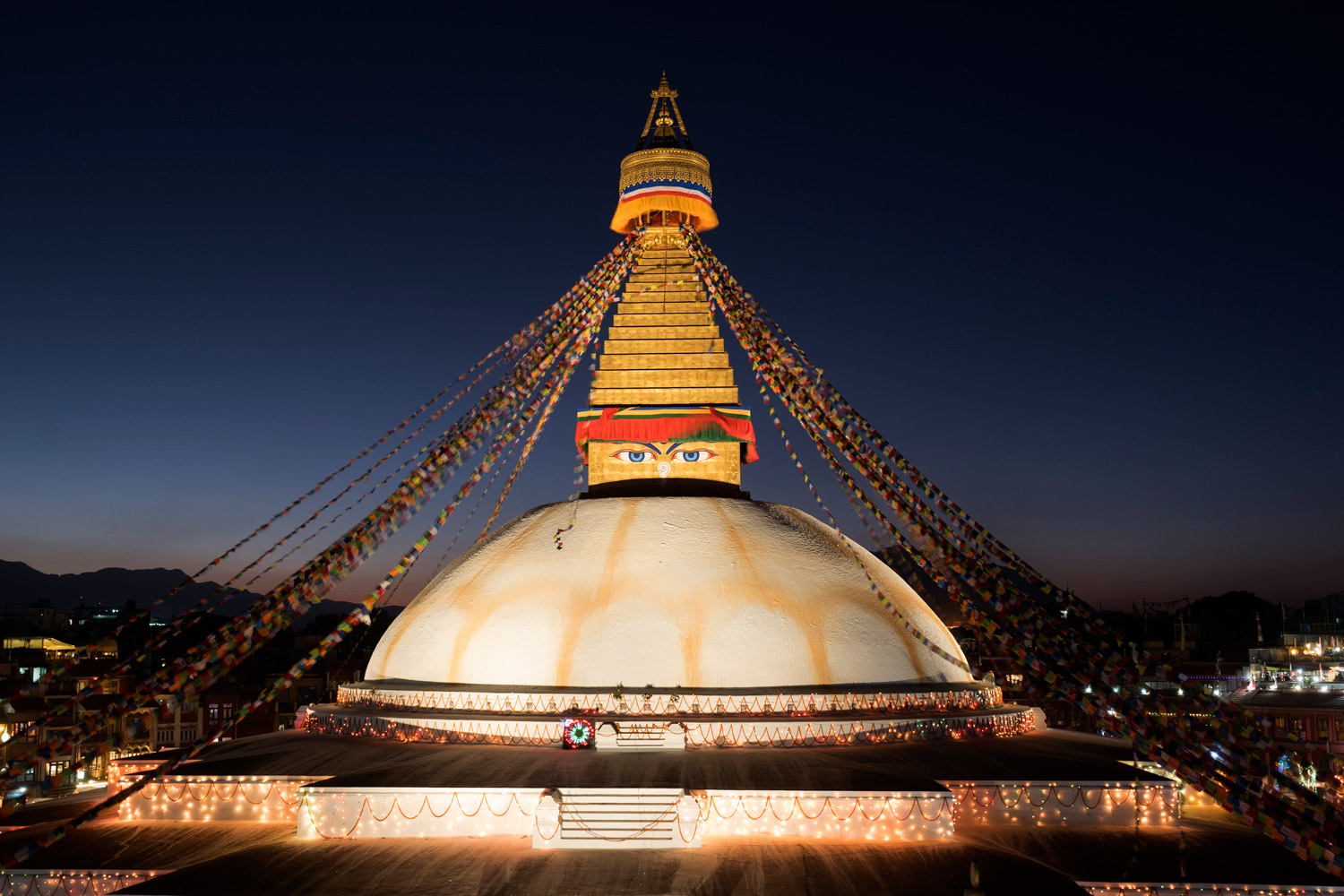
One of the largest stupas in the world, Boudhanath is not just a monument—it’s a living, breathing centre of Tibetan Buddhism in Nepal.
Spiritual Significance: The stupa is considered a mandala of peace, symbolising enlightenment and harmony. Pilgrims walk clockwise around it, spinning prayer wheels and chanting mantras.
Experience: The area around Boudhanath is filled with vibrant shops selling prayer flags, singing bowls, and Tibetan handicrafts. Cosy rooftop cafes offer the perfect spot to sip butter tea while watching the stupa glow under the setting sun.
Why Visit: For its sheer grandeur and the calming energy that washes over you as you join monks and devotees in circumambulating the stupa. It’s meditation in motion.
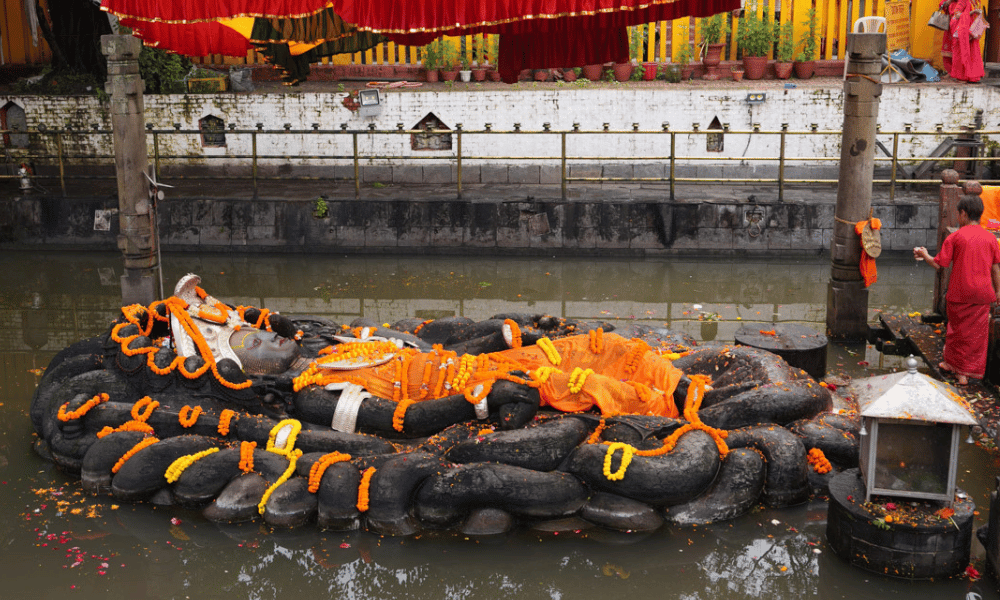
Nestled at the foothills of Shivapuri Hill, about 10 km north of Kathmandu city centre, lies the serene and sacred Jal Narayan Temple, also known as Budhanilkantha. This temple is one of the most fascinating and spiritually significant sites in Nepal, drawing devotees and travellers alike.
Spiritual Significance: Hindus believe this idol is self-manifested (Swayambhu) and among the most powerful representations of Vishnu in the world. Devotees flock here to seek blessings for prosperity, protection, and spiritual strength.
Festivals: The temple is especially vibrant during Haribodhini Ekadashi (October/November), marking the awakening of Lord Vishnu after his cosmic rest. Thousands of devotees from Nepal and India gather here, making it a lively and colourful event.
Unique Feature: Interestingly, it is said that Nepalese kings were forbidden from visiting this temple after an ancient prophecy warned that any monarch who saw the statue would meet an untimely death. This tradition remained until the monarchy ended.
Visitor Experience: The peaceful surroundings, the reflection of the idol in the water, and the constant chanting of prayers create a deeply calming atmosphere. Pilgrims offer flowers, fruits, and butter lamps, while the temple priests perform daily rituals to honour the deity.
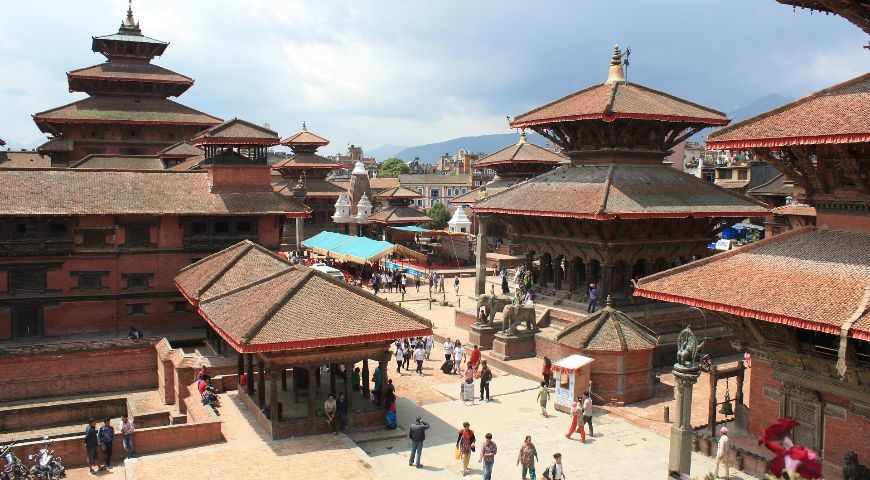
If there is one place in Kathmandu that feels like the beating heart of the city’s history, culture, and spirituality, it’s Kathmandu Durbar Square. Located right in the centre of the capital, this UNESCO World Heritage Site is a dazzling mix of ancient temples, palaces, and courtyards that tell the story of Nepal’s glorious past.
Historical Importance: Kathmandu Durbar Square served as the royal palace complex for the Malla kings who ruled the valley from the 12th to 18th centuries. Later, it became the ceremonial palace for the Shah dynasty as well. Almost every coronation of Nepalese monarchs took place here, making it a site of great national pride.
Architectural Marvels: The square is a living museum of Newar architecture. Its intricately carved wooden windows, tiered pagoda temples, and stone sculptures are masterpieces that showcase the craftsmanship of medieval Nepal.
Spiritual Significance: More than just a palace square, this place is surrounded by temples dedicated to various deities like Shiva, Vishnu, and Ganesh. It remains a vibrant hub where history, religion, and daily life intertwine.
Visitor Experience: Walking through Durbar Square feels like travelling back in time. You’ll hear the bells ringing in temples, watch pigeons flutter across the courtyards, and encounter priests offering blessings to devotees. It’s a blend of serenity and vibrancy that captures Kathmandu’s essence.
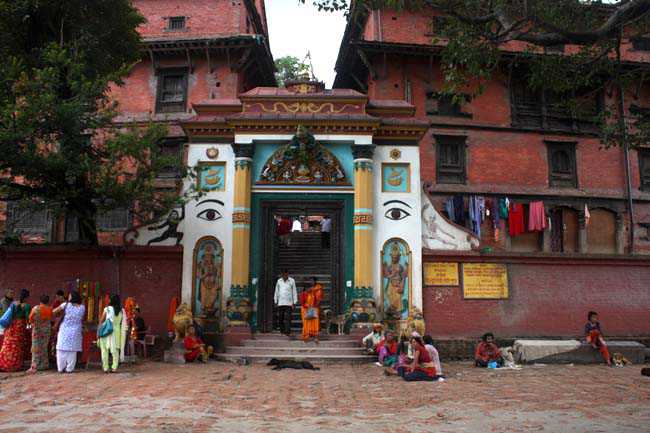
Located just a short walk from the sacred Pashupatinath Temple, Guhyeshwari Temple is a lesser-known yet immensely powerful shrine dedicated to Goddess Parvati. This temple is considered one of the 51 Shakti Peethas, making it a highly revered site for Hindu devotees.
Spiritual Significance: According to legend, Guhyeshwari represents the goddess Parvati’s presence and is associated with the power of Shakti (divine feminine energy). Pilgrims visit the temple to seek blessings for marital bliss, spiritual growth, and protection from negative forces.
Rituals and Offerings: Visitors can light oil lamps, offer flowers, and recite prayers to honour Goddess Parvati. Special ceremonies are held during festivals like Teej, when women flock to the temple to pray for the well-being and longevity of their husbands.
Visitor Experience: As you enter the temple complex, you’ll notice the serene ambience contrasted with the bustling energy of nearby Pashupatinath. The blend of devotion, ritual chanting, and the scent of incense creates a deeply calming spiritual environment. Pilgrims often spend time meditating or observing rituals, making it a peaceful stop on their temple darshan tour
Maha Shivratri – Grand celebrations at Pashupatinath with lakhs of devotees.
Teej Festival – Special pujas for Goddess Parvati.
Holi & Diwali – Cultural vibrancy and temple rituals.
Weather-wise, October to March is best for pleasant travel.
Check in at Kathmandu Hotel: Upon arrival, freshen up and relax. Most hotels near Thamel or Pashupatinath are conveniently located for temple visits.
Evening Visit to Swayambhunath (Monkey Temple):
Climb the 365 steps to reach the stupa and enjoy panoramic views of Kathmandu.
Witness monks and devotees spinning prayer wheels and offering prayers.
Take in the mesmerising sunset, watch the monkeys play, and soak up the spiritual vibe of this sacred hilltop stupa.
Optional Dinner in Thamel: Sample local Nepali cuisine such as dal bhat, momos, and traditional Newari dishes.
 Overnight stay in Kathmandu
Overnight stay in KathmanduMorning Visit to Pashupatinath Temple:
Arrive early to witness the morning aarti on the ghats of the Bagmati River.
Explore Guhyeshwari Temple, just a short walk away, to seek blessings from Goddess Parvati.
Midday Stop at Jal Narayan Temple (Budhanilkantha):
Marvel at the 5-meter-long reclining Vishnu statue floating on a pond.
Lunch Break: Choose a local restaurant near Boudhanath or Thamel for traditional Nepali food.
Afternoon Visit to Boudhanath Stupa:
Circumambulate the stupa clockwise, spinning prayer wheels.
Explore nearby Tibetan shops and enjoy a cup of butter tea at a rooftop café.
Evening Visit to Kathmandu Durbar Square:
Witness locals performing evening rituals and traditional dances if visiting during a festival.
Stroll through the narrow lanes, capturing the stunning architecture and vibrant street life.
Return to Hotel: Relax and reflect on the day’s spiritual experiences.
Early Morning Visit to Dakshinkali Temple (Optional):
Located about 22 km from Kathmandu, dedicated to Goddess Kali.
Experience the mystical energy of the temple and its surroundings.
Breakfast and Hotel Checkout: Prepare for the return journey.
Drive Back to Raxaul:
Enjoy scenic views on the way back.
Stop at local markets or dhabas for souvenirs and snacks.
Arrive in Raxaul by late afternoon or early evening, concluding your temple darshan tour.
Booking a Raxaul to Kathmandu temple Tour package ensures a smooth, comfortable, and spiritually fulfilling journey. Reputed operators like Musafircab provide a range of facilities to make your pilgrimage hassle-free:
AC Cab / Taxi with Border Permit Assistance: Enjoy a comfortable, air-conditioned ride from Raxaul to Kathmandu, with all necessary border documentation handled by the operator. No waiting in long queues!
Comfortable Hotels: Stay in carefully selected hotels offering breakfast, clean rooms, and family-friendly amenities. Perfect for travellers with children or elderly family members.
Guided Services: Professional guides accompany you during temple visits, helping you understand rituals, histories, and spiritual significance while offering local sightseeing insights.
24x7 Support: Operators ensure you have access to assistance throughout your journey, making it safe, smooth, and worry-free.
Special Packages for Families and Seniors: Tailored itineraries, comfortable travel options, and slower-paced schedules ensure everyone—from young children to seniors—can enjoy the tour fully.
These facilities combine to make your temple darshan journey both spiritually rewarding and physically comfortable.
To make the most of your Kathmandu temple tour, keep these tips in mind:
Carry Valid ID Proofs: Passport, voter ID, or other government-issued ID is essential for crossing the India-Nepal border.
Nepali Currency: Keep some Nepali Rupees handy; however, Indian currency (INR 100 notes) is widely accepted in most places near temples and markets.
Respect Temple Rules: Some shrines may restrict photography or require specific attire. Observe temple decorum to honour local customs.
Best Time for Darshan: Early mornings, especially at Pashupatinath, offer a serene atmosphere with fewer crowds.
Seasonal Clothing: Kathmandu can get chilly in winter. Carry warm clothes, and wear comfortable footwear for walking and climbing temple steps.
Hydration and Snacks: Keep water and light snacks with you, especially if your itinerary includes long temple visits or drives.
Engage Respectfully with Devotees: You may meet locals performing rituals or festivals; approach politely, greet with a “Namaste,” and observe quietly.
Carry a valid ID proof (passport not required for Indians, voter ID/Aadhaar accepted).
Keep Nepali currency or Indian notes (?100 denominations widely accepted).
Comfortable shoes for city walks and jungle treks.
Camera or smartphone (you’ll want to capture those epic sunrise and wildlife moments).
Layered clothing – mornings and evenings can be cool, while afternoons are warm.
Reusable water bottle to stay hydrated.
Power bank – because missing that sunset selfie is simply not an option.
Choosing the right tour operator can make your Raxaul to Kathmandu temple darshan smooth, comfortable, and truly fulfilling. Here’s why Musafircab stands out:
Trusted Cross-Border Taxi Service: With years of experience, Musafircab ensures reliable and safe travel across the India-Nepal border.
Hassle-Free Border Entry: Complete assistance with permits and documentation allows you to focus entirely on your spiritual journey.
Customised Packages: Whether you are travelling solo, with family, or in a group, Musafircab offers tailored packages to match your needs.
Affordable Pricing: Transparent pricing with no hidden charges makes budgeting easy and stress-free.
Local Expertise: Drivers and guides are familiar with Kathmandu’s temples, rituals, and sightseeing spots, ensuring a smooth and enriching darshan experience.
Your journey is more about devotion and less about travel stress, letting you fully immerse yourself in the spiritual ambience of Kathmandu.
The Raxaul to Nepal Tour Package is more than just a trip—it is a soulful journey into Nepal’s spiritual heart. From the grandeur of Pashupatinath Temple to the serene aura of Boudhanath Stupa, each shrine embodies centuries of devotion, history, and divine energy. Thanks to its short distance and easy accessibility from Raxaul, Kathmandu makes for an ideal pilgrimage destination for Indian devotees. Whether you seek the blessings of Lord Shiva, Goddess Parvati, or Lord Vishnu, this tour offers an enriching spiritual experience that leaves a lasting impression. With the right tour operator, comfortable travel arrangements, and a well-planned itinerary, your temple darshan becomes not just a visit but a cherished memory for a lifetime.
So, pack your bags, cross the Raxaul border, and immerse yourself in the sacred aura of Kathmandu’s temples. Nepal is waiting with open arms—and blessings—to make your spiritual journey unforgettable.
